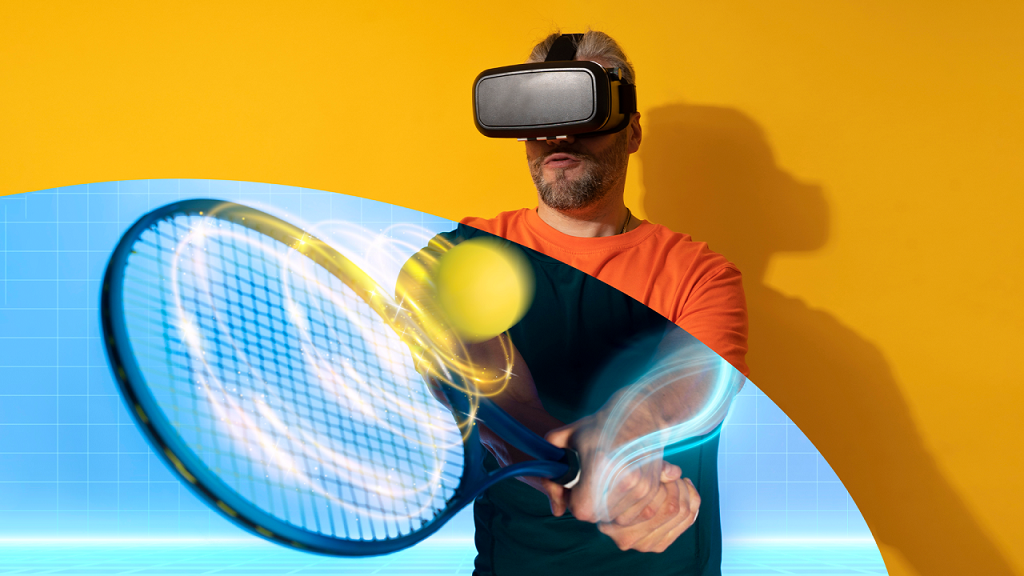Sports have always been a thrilling intersection of athleticism, strategy, and entertainment. But in recent years, a new dimension has been added to the equation – technology. From performance-tracking wearables to AI-powered coaching and smart stadiums, innovation is rapidly transforming the way athletes train, compete, and fans experience the games they love. This guide explores some of the most fascinating advancements in sports technology and equipment, showcasing how they’re pushing the boundaries of human potential and reshaping the future of sports.
Revolutionizing Training: Wearables, Biometrics, and Data-Driven Insights
The rise of wearable technology has fundamentally changed how athletes train:
-
Performance Tracking and Analytics: Wearable devices like smartwatches and GPS trackers monitor everything from heart rate and VO2 max (maximal oxygen uptake) to distance traveled and calorie expenditure. This wealth of data allows athletes and coaches to optimize training programs based on individual needs and goals.
-
Injury Prevention and Rehabilitation: Wearables can detect potential imbalances or overtraining before they lead to injuries. Biometric sensors can also track recovery progress and guide athletes back to peak performance after injuries.
-
Personalized Training Programs: Data from wearables can be used to create personalized training programs tailored to an athlete’s strengths and weaknesses. This ensures a more efficient and effective approach to achieving peak performance.
-
AI-Powered Coaching: Artificial intelligence (AI) is making inroads into the coaching world. AI-powered virtual coaches can analyze data from wearables and provide real-time feedback, personalized training suggestions, and even motivational support.
Enhancing Performance: Cutting-Edge Equipment and Materials
Innovation isn’t limited to wearables; cutting-edge equipment and material science are also revolutionizing sports:
-
Smart Equipment: From self-adjusting tennis rackets that provide feedback on swing mechanics to aerodynamically designed swimsuits that minimize drag, smart equipment is helping athletes shave precious seconds off their performances.
-
Advanced Materials: New materials like ultra-lightweight yet extremely strong composites are being used to create lighter, more responsive equipment, giving athletes a competitive edge.
-
Biomechanical Optimization: Sports scientists are using advanced 3D printing and biomechanical analysis to design custom-made equipment like prosthetics for athletes with disabilities or personalized running shoes that optimize biomechanics for individual runners.
Transforming the Fan Experience: Immersive Technologies and Connected Stadiums
Technology isn’t just impacting athletes; it’s also transforming the experience for fans:
-
Virtual and Augmented Reality (VR/AR): VR experiences allow fans to experience games from the field level, while AR can overlay real-time statistics and graphics onto live broadcasts, creating a more immersive and interactive viewing experience.
-
Connected Stadiums: Stadiums are becoming increasingly “smart,” with features like mobile ticketing, in-seat ordering, and interactive displays that enhance convenience and fan engagement.
-
E-sports and the Rise of Virtual Competition: Esports, or competitive video gaming, is a rapidly growing phenomenon. Esports offer new avenues for competition and entertainment, blurring the lines between physical and virtual sports.
Challenges and Considerations in the Tech-Driven Sports Landscape
While the possibilities of sports technology are exciting, there are also challenges to consider:
-
Cost and Accessibility: Advanced technology can be expensive, potentially creating an uneven playing field where access is limited by financial resources.
-
Privacy Concerns: The vast amount of data collected through wearables raises privacy concerns. Clear guidelines and regulations are necessary to ensure responsible data collection and usage.
-
The Human Element: Technology should enhance, not replace, the human element in sports. Maintaining the integrity of competition and fostering a culture of sportsmanship are crucial alongside technological advancements.

The Future of Sports: A Collaborative Ecosystem
The future of sports is likely to be a collaborative ecosystem where athletes, coaches, sports scientists, technologists, and fans work together to push the boundaries of human potential and create even more exciting and engaging sporting experiences.
-
Focus on Inclusivity and Accessibility: Technological advancements should strive to be inclusive and accessible to athletes and fans from all backgrounds.
-
Open Innovation and Collaboration: Open collaboration between different stakeholders in the sports ecosystem will be crucial for responsible and sustainable development in sports technology.
-
Ethical Considerations and the Spirit of Sports: As technology evolves, it’s vital to prioritize ethical considerations and ensure that the core values of sportsmanship, fair play, and human achievement remain central to the experience.
Conclusion: A New Era of Sports
Sports technology is rapidly reshaping the landscape of athletics, offering athletes new tools to train and compete while creating immersive and interactive experiences for fans. While challenges remain, the future of sports is undoubtedly bright. By harnessing technology responsibly and prioritizing ethical considerations, we can ensure that sports remain a powerful force for human connection, healthy competition, and pushing the boundaries of what’s possible. So, buckle up and get ready for a thrilling ride as technology continues to redefine the games we love and the athletes who inspire us.





